We recently visited the 309 AMARG, nicknamed "The Boneyard" (#47 on my "100 Things To Do In Arizona" list), the ski lift at Mt. Lemmon (#10) and the Butterfly Garden in Patagonia (#64). All three are a kind of sanctuary for things that fly.
Shortly after WWII, the Army created a storage facility for surplus B-29 and C-47 aircraft at Davis-Monthan Air Force Base (D-MAFB) in Tucson. Today this facility is the 309 AMARG (Aerospace Maintenance and Regeneration Group) or "Boneyard" and includes more than 4,400 aircraft and 13 aerospace vehicles from the military and several federal agencies including NASA and NOAO. D-MAFB was chosen because of the scant rainfall and low humidity which allows aircraft to be stored indefinitely with minimal deterioration and the hard, clay-like soil (caliche) which allows aircraft to be parked on the desert floor rather than needing to build expensive parking ramps.
Row and after row of aircraft were lined up.
(We were not allowed to get off the tour bus so some photos have glass glare.)
309 AMARG has two purposes: maintenance and regeneration. When aircraft need retrofitting, remodeling or updates, they are sent here. It is the "dry dock" for aircraft. When there is a surplus of a certain type of aircraft, they are safely taken apart and stored. In this case, it is a "storage unit." Both "dry dock" and "storage unit" fall under maintenance. As an aircraft is redesigned and modified, earlier versions are sometimes sold to our Allies - a kind of "Craigslist" for Aircraft. And when an old aircraft becomes structurally unsound and unsafe to fly, it will be grounded and used for spare parts - a kind of "NAPA Parts Store" for aircraft. Eventually, when all the parts have been stripped or are obsolete, the aircraft is scrapped for metal - a kind of "Recycling Program." "Craigslist", the "NAPA Parts Store" and the "Recycling Program" fall under regeneration. The group is quite profitable as every dollar in costs generates $10 profit.
I like the aircraft with the bat wings on the tail- could it be a Bat Jet?
Our tour guide, like most of the Boneyard guides, was a retired Air Force pilot who now volunteers as a tour guide at the Boneyard. Their affection and respect for these aircraft is evident in the way they talk about them. It is a sanctuary for both the aircraft and the pilots that flew them.
After a quick lunch, it was time to skeedaddle up Mt. Lemon to Ski Valley. As we left Tucson behind and headed up the mountain, it was 105 degrees outside. The temperature had dropped 27 degrees by the time we got to Ski Valley to take the ski lift to the summit (#10). Those who know me will recognize that this would require me to come face-to-face with a rather significant fear of mine - namely, having my feet dangle far (as in 18 inches!) above the ground. Will I be able to do it?
As I watched the ski lift from the safety of the ground, I remembered the reasons I wanted to ride it to the top: friends and family had told me 1) it was fun, almost thrilling even, 2) it is beautiful, a panoramic vista you can't see from the ground, and 3) there is a quiet solitude you get only by being above everything else - people, noise, commotion.
This didn't look too bad- and the chairs were only four or five feet above the ground.
With a little instruction and coaxing from Richard, I was able to get on the ski lift without being knocked over or falling off! And I kept my eyes OPEN!!
But wait! The ground is ... getting ... farther ... and farther ... away!
And my feet are dangling!
You can tell the ground is FAR away because it's out of focus!
< remember to breathe >
I could feel my heart racing. Surely we're almost to the top?!
Richard was talking to me, trying to distract me. I have no idea what he said but could hear the calm in his voice. And he seemed to be enjoying himself.
Remember to breathe.
Are you kidding me? They have to post a sign about this? That means someone has actually swung and bounced the chairs?
Are we there yet????????
No really, how far is it to the top?
A MILE?????
Remember to breathe.
Look around.
Trees that were damaged in the Aspen Fire (2003) became more numerous.
And several observatories are at the top!
Finally, the top of the mountain was in view... and the platform to get off the chair lift.
I managed to get off the chair lift and move away without getting hit in the head or falling down.
The summit is at 9100 feet; the ski lift climbs 900 feet during its one-mile trek and took us about 15 minutes. Once my feet were no longer dangling but firmly planted on solid ground, I realized that I did enjoy the ride. Well, I enjoyed that last five minutes of the ride.
Now it was time to explore the top of the mountain. The first thing we noticed was that it was even cooler.
Dozens of towers (microwave repeaters and other communication stuff) and blackened trees from the Aspen Fire dotted the summit making it look inhospitable and uninviting.
But standing on the edge looking south gave us a panoramic aerial view of Tucson. I tried to pick out places I know there but didn't have much success.
And looking northeast gave us a view of Summerhaven, a tiny community near the summit.
After walking around for about 45 minutes, it was time to head back down the mountain. I felt a tiny bit of apprehension as I got on the ski lift but then became engrossed in the view which was completely different from what I saw going up the mountain.
As soon as we got away from the loading ramp and were on our way, I noticed the quiet. Occasionally we would hear a bird chirping or the mechanical sound of the chair going over the joints but nothing else. Just quiet.
We could see for miles and miles. It was quiet ... and peaceful ... a nap for my mind!
Although the ski lift operator assured me it took the same amount of time to come down as it did to go up, the ride down seemed much shorter. Before I was ready, it was time to get off - which I did like a pro ... and with a big smile on my face! I had a sanctuary above the ground; a place to just let my mind wander, thinking about nothing and everything.
No longer anticipating meeting my fear as I had on the way up, I enjoyed the drive down the mountain. We were treated to quite a few hoodoos - tall, thin columns of rock that extend upwards from the bottom of an arid drainage basin. They vary in height from five or six feet to 80 or 90 feet.
If you look at them long enough, they begin to look like famous people!
We stopped at a few places to get a better look at these unusual-looking formations. They are made by wind and water erosion and often have a "capstone" made of harder rock that gives some protection from the elements to the column.
At this spot, the parking area was on the other side of the street from the hoodoos. While I appreciated the crosswalk, I am dismayed that we need a huge 3-foot by 5-foot sign instructing pedestrians to look both ways before they cross the street - are we all still in kindergarten? But that's a post for another day.
The next day we were off to southern Arizona - specifically the Butterfly Garden in Patagonia (#64). While well-known internationally by birders, hundreds of species of butterflies also migrate through southern Arizona during the summer months. Located on the south side of Town Park, the 800 square foot butterfly sanctuary was built in 1996 with donations from local residents and organizations and is overseen by a group of volunteers.
We saw LOTS of butterflies like the Bairds Old World Swallowtail (on left) and the Queen Butterfly (on right).
We strolled through the park, sat on several benches and watched dozens and dozens of butterflies dance around the flowers. The garden is full of their favorite plants so it's a bit like watching children let loose in a candy shop. It is definitely a sanctuary for the butterflies - but it is also a haven for the people that stop to look at the beautiful flowers, watch the gorgeous butterflies flit about and enjoy nature!
Thumb Up or Down: UP for all three!
Miles Round Trip: see next post
Miles To Date: see next post
Percent of List Completed: 71%
Date of This Trip: August, 10-11, 2012
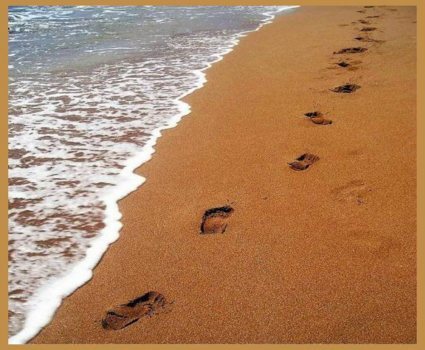

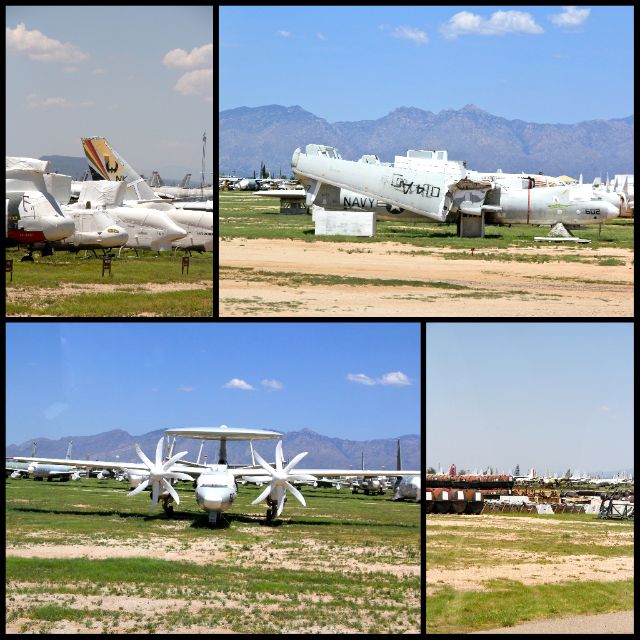
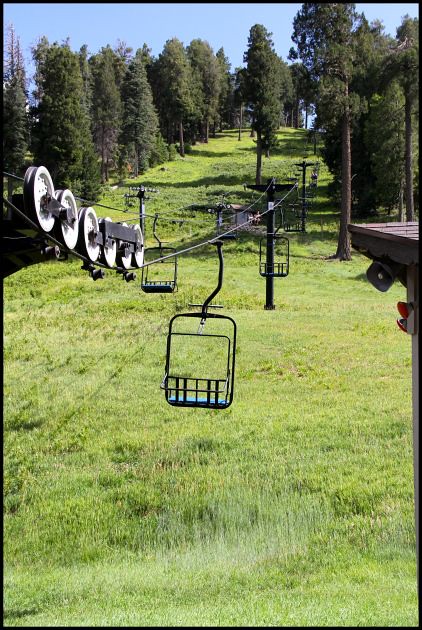
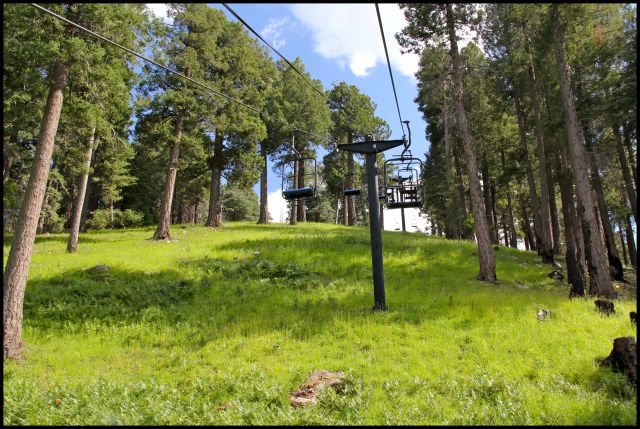

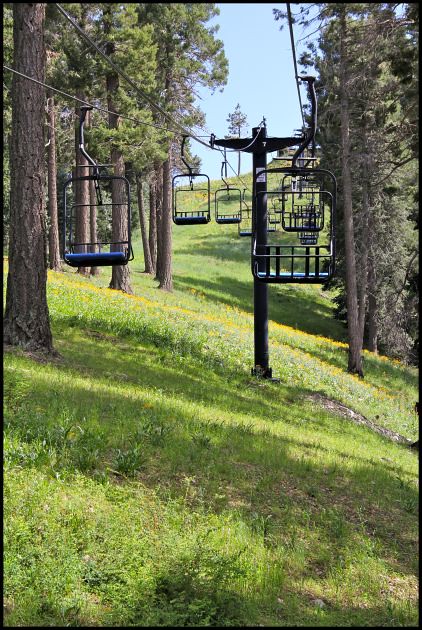


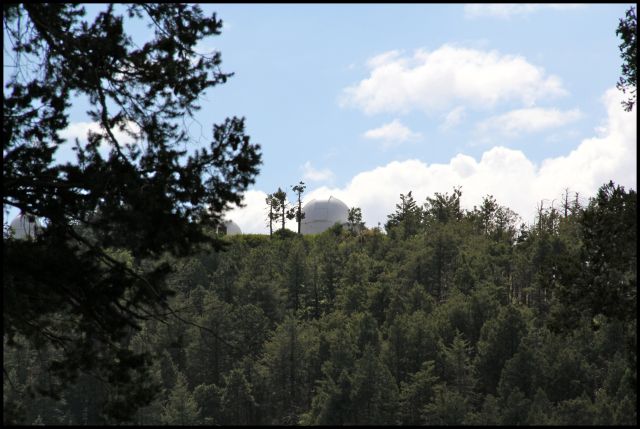
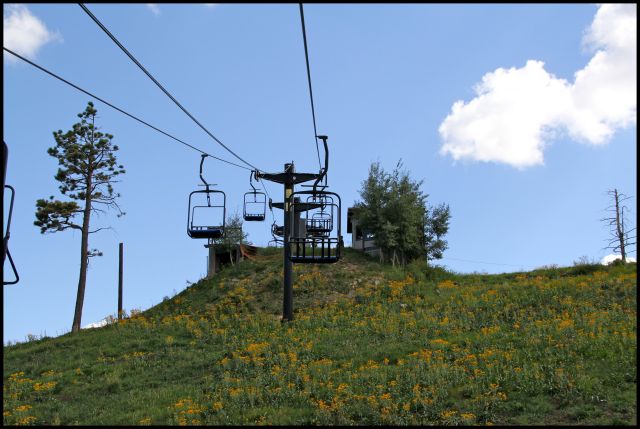
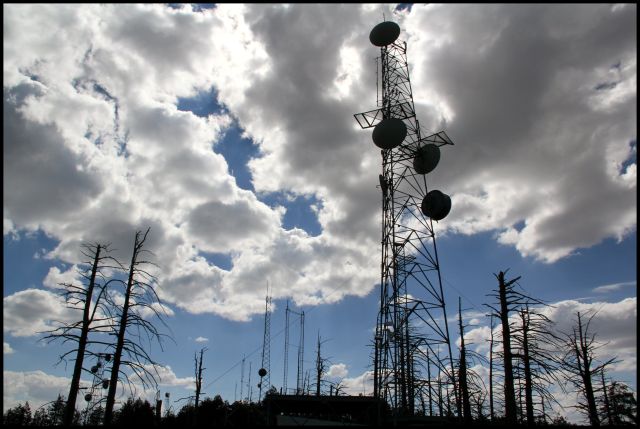
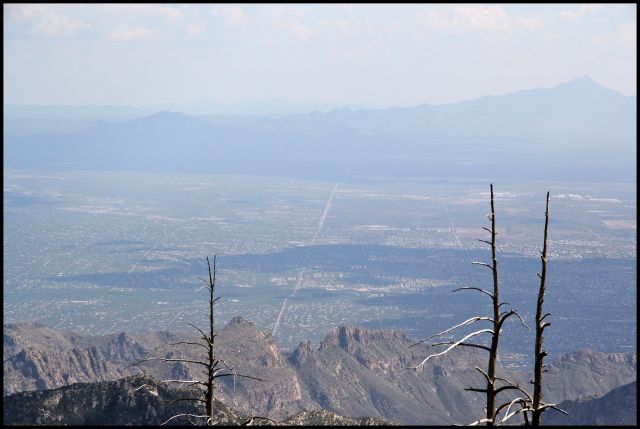
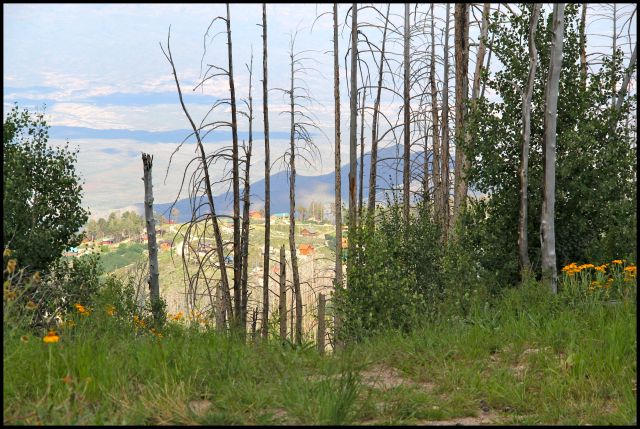
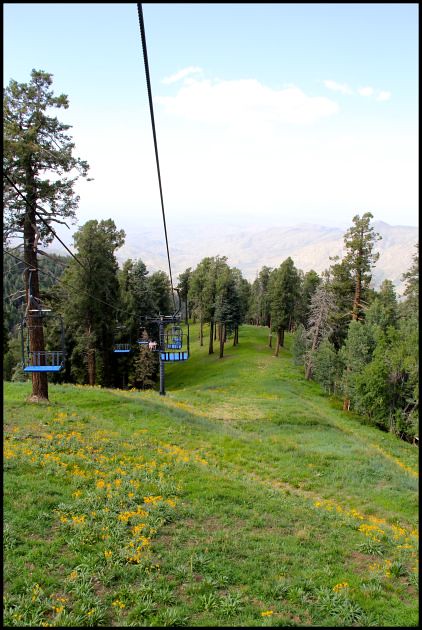
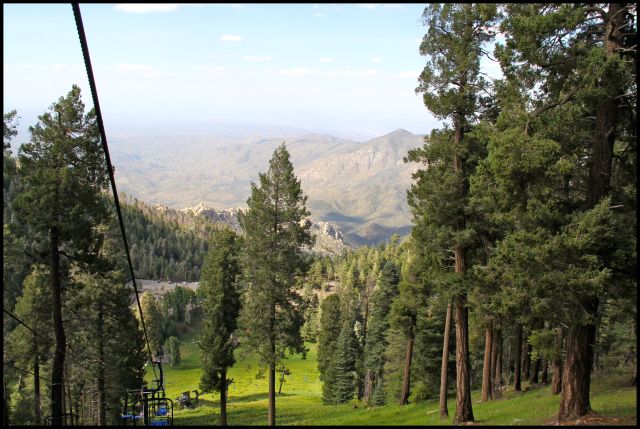
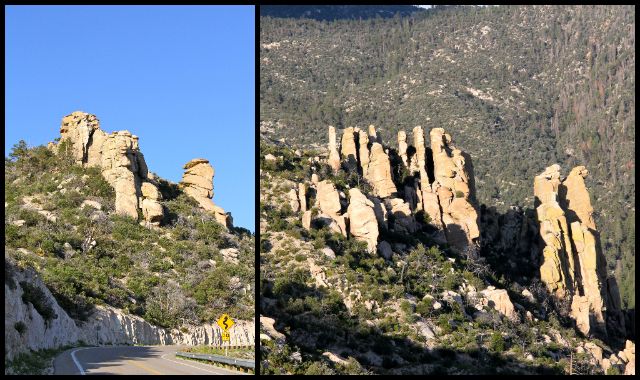

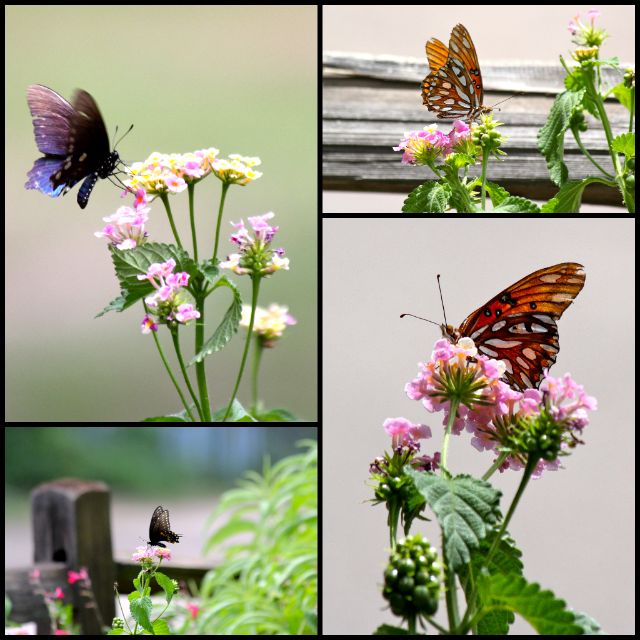
What an awesome trip and so proud of you making it up the ski lift. I too do not like heights and ski lifts are the worst. We actually had someone on our ski lift chair try to stand up so he could put on his ski that fell off, so obviously they need the signs. The ski lift at Sunrise outside Springerville also runs in the summer and the view there is just as breathtaking. Love the posts!
ReplyDeleteThanks, Mike! I think I could do another ski life- maybe the one at Sunrise will be next. And roller coasters might be okay - if they don't go upside down.
Delete